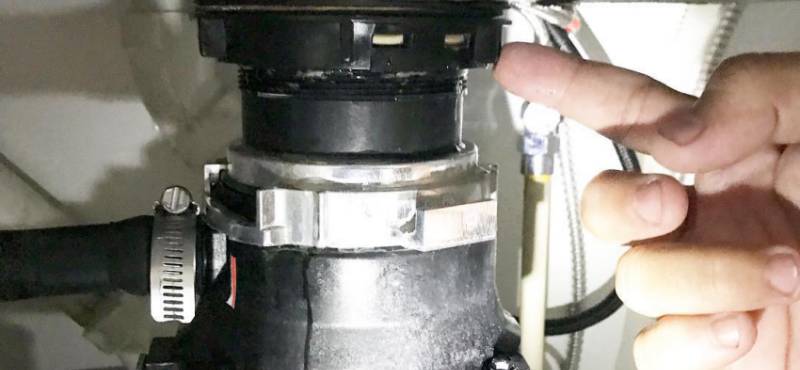Handy Techniques for Repairing a Dripping Garbage Disposal
Handy Techniques for Repairing a Dripping Garbage Disposal
Blog Article
We've stumbled on this post relating to Garbage Disposal Leaking From Bottom below on the web and decided it made sense to write about it with you here.

Garbage disposals are vital kitchen appliances that assist in getting rid of food waste successfully. However, a dripping garbage disposal can be a discouraging and untidy issue to manage. Fortunately, lots of leaks can be fixed easily with a few simple steps. In this write-up, we will certainly review exactly how to fix a dripping garbage disposal effectively.
Intro
Garbage disposals are set up under kitchen sinks and are made to shred food waste into smaller pieces, enabling it to pass through the pipes system easily. While these devices are normally trustworthy, leakages can take place over time because of wear and tear, loose connections, or damages to the system.
Typical Root Causes Of Leaks in Trash Disposals
Worn Seals and Gaskets
Seals and gaskets play a crucial duty in protecting against water from leaking out of the garbage disposal. With time, these components can wear away, resulting in leaks around the disposal system.
Loose Links
The links in between the garbage disposal and the plumbing system can end up being loose with time, triggering water to leakage out throughout procedure.
Fractures or Holes in the Disposal Unit
Physical damage to the garbage disposal, such as fractures or holes in the housing, can likewise result in leaks.
Identifying the Resource of the Leakage
Prior to attempting to deal with a leaking garbage disposal, it is important to identify the resource of the leak. This can generally be done via visual examination or by carrying out straightforward examinations.
Visual Evaluation
Inspect the waste disposal unit system thoroughly for any indicators of water leak. Pay attention to locations around seals, gaskets, and connection points.
Examining for Leakages
One way to check for leaks is by running water via the disposal device and looking for any visible signs of leakage.
Devices and Products Needed for Fixing a Dripping Waste Disposal Unit
Before starting the repair procedure, gather the necessary devices and products, consisting of a screwdriver, flexible wrench, plumber's putty, replacement seals or gaskets, and epoxy or patching product for repairing fractures or holes.
Step-by-Step Overview to Taking Care Of a Leaking Garbage Disposal
Shut off the Power
Before trying any kind of repairs, ensure that the power to the garbage disposal device is shut off to prevent the threat of electric shock.
Situate the Leak
Determine the precise area of the leakage and establish the cause.
Tighten Connections
Utilize a wrench to tighten up any kind of loosened connections in between the disposal device and the pipes system.
Change Seals or Gaskets
If the leakage is due to worn seals or gaskets, eliminate the old parts and change them with new ones.
Patching Splits or Openings
For fractures or holes in the disposal unit, usage epoxy or an ideal patching material to seal the damaged location.
Examining the Waste Disposal Unit After Repair
As soon as the fixing is total, test the waste disposal unit by running water with it to make certain that the leak has actually been fixed.
Preventive Maintenance Tips to Prevent Future Leaks
To stop future leakages, it is necessary to perform routine maintenance on your garbage disposal. This consists of keeping it clean, preventing putting here non-food items or difficult objects down the disposal, and regularly checking for leaks or other issues.
Verdict
To conclude, repairing a leaking garbage disposal is a relatively straightforward procedure that can be finished with standard tools and materials. By following the steps described in this article and exercising precautionary upkeep, you can keep your waste disposal unit in good working condition and prevent costly repairs in the future.
What to Do About a Leaking Garbage Disposal
A leaking garbage disposal often goes unnoticed until you confront a sopping cabinet, a foul-smelling puddle, or an audible drip-drip-drip from the unit. The fix can be frustrating, too, because the leak can stem from a number of components in the system. Fortunately, with a little sleuthing, you can zero in on the leak and—depending on the exact location—stop the icky oozing and repair the component that caused it. Worst case scenario, if it turns out that the garbage disposal must be replaced, installing a new one is a reasonable do-it-yourself task for those with basic plumbing skills. Read on to keep the cash you’d otherwise hand over to a pro.
Prepare to find the leak
Prior to testing the garbage disposal for leaks, unplug it at the wall outlet and turn off the power from the breaker box to prevent electrical shock. Then insert a watertight sink stopper into your sink drain and wipe the unit dry with a clean cloth. In any handy container, mix a few drops of food coloring into a few cups of water, and pour the dyed water onto the sink stopper to help you locate the leak.
Investigate the source
the top, where the disposal meets the sink drain the side, where the dishwasher hose or main drain pipe connects to the disposal or the bottom of the unit Inspect each of these locations while gliding a light-colored rag over the unit; the dyed water will readily show on the rag and reveal the location of the leak. If a leak isn’t immediately apparent, remove the sink stopper and pour a few more cups of dyed water down the sink drain, then check for leaks again. Leaks near the top of the unit are more likely to show themselves while the sink is plugged, while side and bottom leaks are more noticeable while the sink is unplugged.
The metal sink flange that sits directly inside the sink drain is typically sealed around the top with plumber’s putty (a clay-like sealant) and then secured from under the sink with bolts. If the plumber’s putty deteriorates, or the bolts loosen, the flange can no longer form a watertight seal between the sink drain and the disposal—which could cause a leak at the top of the unit.
To reseal the leaky flange, you must first detach the garbage disposal. Start by loosening the screws securing the main drain pipe to the disposal, then loosen the screws in the metal clamp securing the dishwasher hose to the disposal and detach the drain pipe and dishwasher hose from the disposal. Loosen the screws in the mounting ring that connects the disposal to the metal mounting assembly beneath the sink, then pull down the disposal and carefully set it on a clean, dry surface. Loosen the bolts in the mounting assembly with a wrench, then pull down the mounting assembly and set it near the disposal.

As a reader about Why Is , I assumed sharing that excerpt was beneficial. Remember to take the opportunity to distribute this write-up if you appreciated it. I am grateful for your time. Visit us again soon.
Visit Link Report this page